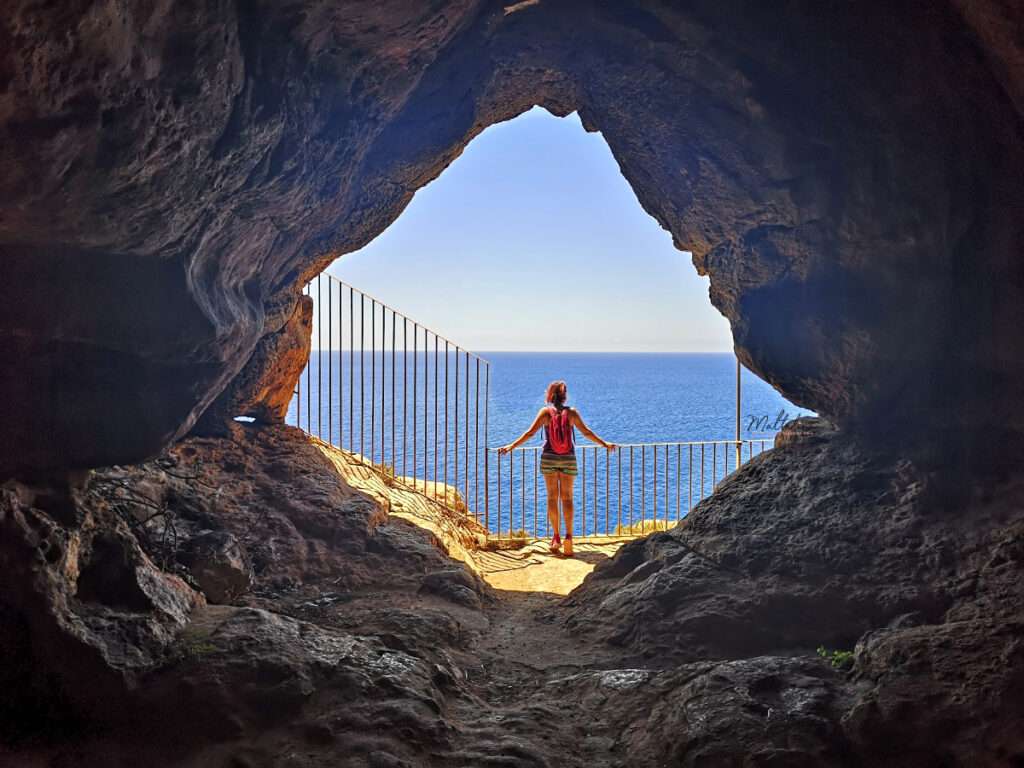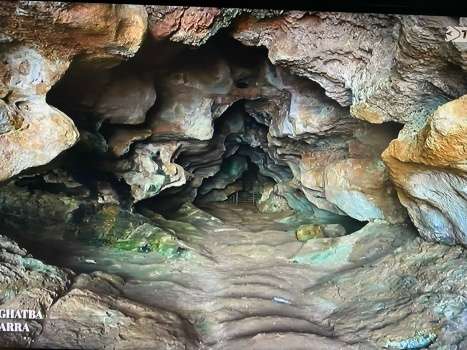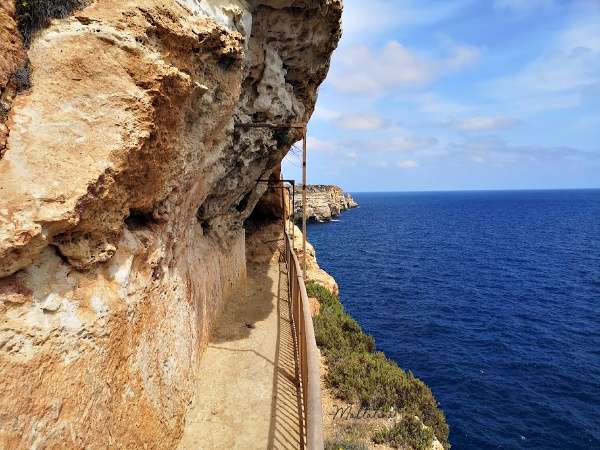Table of Contents
ToggleGhar Hasan: History, the Legend, and Its Place Today
Located along the dramatic southern coast of Malta lies Ghar Hasan, a sea cave steeped in legend, history, and mystery. With its jagged cliffs, breathtaking views of the Mediterranean, and the echoes of an ancient tale, Ghar Hassan continues to capture the imagination of locals and visitors alike. This site is not just a natural wonder but also a place where folklore, faith, and Malta’s heritage converge.
The Cave and Its Setting
Ghar Hassan, which translates as “Hasan’s Cave,” is situated near Birżebbuġa on the rugged coastline overlooking the blue expanse of the Mediterranean Sea. The area is characterized by sheer cliffs that plunge dramatically into the water, offering panoramic vistas that stretch as far as the eye can see. The cave itself extends deep into the limestone rock, with natural chambers and passageways shaped by centuries of erosion.
Beyond its geological beauty, the cave’s setting carries a sense of isolation and awe. Standing at its entrance, one can imagine why stories of tragedy and intrigue became attached to this natural monument.

The Legend of Hasan
The tale that gave the cave its name is one of the most enduring pieces of Maltese folklore. It dates back to the period of Muslim rule on the Maltese islands, around the 9th to 11th centuries. The central figure is a Saracen soldier named Hassan, remembered in local tradition as both powerful and tyrannical.
According to legend, Hassan abducted a young Maltese maiden, bringing her to the cave that now bears his name. Accounts differ on whether his motives were fueled by lust, revenge, or a desperate attempt to hold power over the islanders. The girl, however, resisted fiercely.
As the story goes, Hassan intended to make the maiden his bride against her will. In her desperation, she prayed for deliverance. Cornered within the cave, with the sea on one side and Hassan blocking her escape, she chose a tragic path: leaping into the abyss of the Mediterranean rather than submitting to her captor. Overcome by despair or rage, Hassan himself either jumped after her or was struck down, depending on which version of the legend is told.
The story embodies themes of sacrifice, honor, and resistance, resonating deeply with Malta’s long history of foreign rule and its people’s enduring resilience.

History Around the Legend
While the story of Hasan is folklore, the historical context of the cave is rooted in real events. Malta, positioned at the crossroads of the Mediterranean, was subjected to numerous waves of conquest—from the Phoenicians, Romans, and Byzantines to the Arabs, Normans, and later the Knights of St. John.
During the period of Muslim occupation, the islands underwent significant cultural shifts, including the introduction of new agricultural practices, language influences, and defensive strategies. The legend of Hassan reflects the tensions of that era, serving as a symbolic tale of resistance against foreign domination.
Over time, Ghar Hassan became a place where locals would recount the story as both a cautionary tale and a reminder of their collective identity. Even in later centuries, as Malta became a Christian stronghold under the Knights, the story endured, passed down through oral tradition and woven into the cultural tapestry of the island.
Ghar Hasan in Folklore and Popular Culture
Legends such as Hasan’s often grow beyond their origins, gaining layers of meaning with each retelling. Some versions suggest that Hassan was not merely a soldier but a notorious bandit who terrorized the countryside. Others add mystical dimensions, portraying the cave as cursed, haunted by the restless spirits of those who perished within its depths.
The tale has inspired storytellers, historians, and even poets across generations. While little physical evidence ties the legend to the cave, the story persists because it taps into universal human themes: freedom, love, sacrifice, and the eternal struggle between oppressor and oppressed.
Visiting Ghar Hasan Today
Today, Ghar Hasan is a point of interest for both tourists and locals. Visitors often hike to the site to admire the dramatic coastal scenery, with its windswept cliffs and endless sea horizon. The cave itself remains a natural wonder, though access has been restricted at times due to safety concerns about unstable rock formations.
Standing near the site, it is easy to sense why the legend has endured. The roar of the sea below, the stark beauty of the cliffs, and the solemn quiet of the cave all contribute to an atmosphere where myth and history feel inseparably linked.
Beyond its physical presence, Ghar Hassan is part of Malta’s identity. It reminds visitors that the island’s heritage is not only carved into its architecture and fortifications but also embedded in its landscapes and oral traditions.
The Enduring Symbolism
In the modern age, Ghar Hasan stands as more than a tourist attraction. It is a symbol of Malta’s cultural resilience and the importance of storytelling in preserving heritage. Legends like Hassan’s keep history alive in ways that are both emotional and symbolic, allowing each generation to engage with the past in a deeply human way.
Whether one believes the tale to be true or simply a myth, the story of Ghar Hassan offers a lens into the Maltese spirit: a determination to endure, to resist, and to honor freedom at all costs.
As the sun sets over the Mediterranean, casting golden light on the cave’s rugged facade, one cannot help but feel a connection to the countless generations who stood here before—hearing the same sea, seeing the same cliffs, and remembering the story of Hassan and the maiden who leapt into the waves.

Ghar Hasan is more than a cave; it is a living legend etched into Malta’s coastline. Its story, whether factual or mythological, is part of the island’s cultural heartbeat. Today, it invites reflection not only on Malta’s rich past but also on the power of human resilience and the enduring strength of storytelling.



